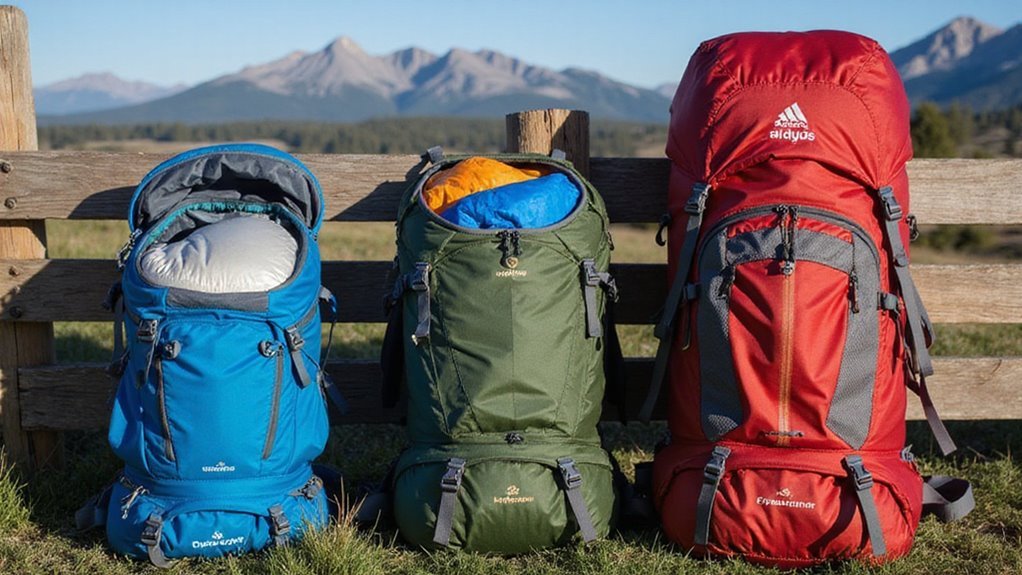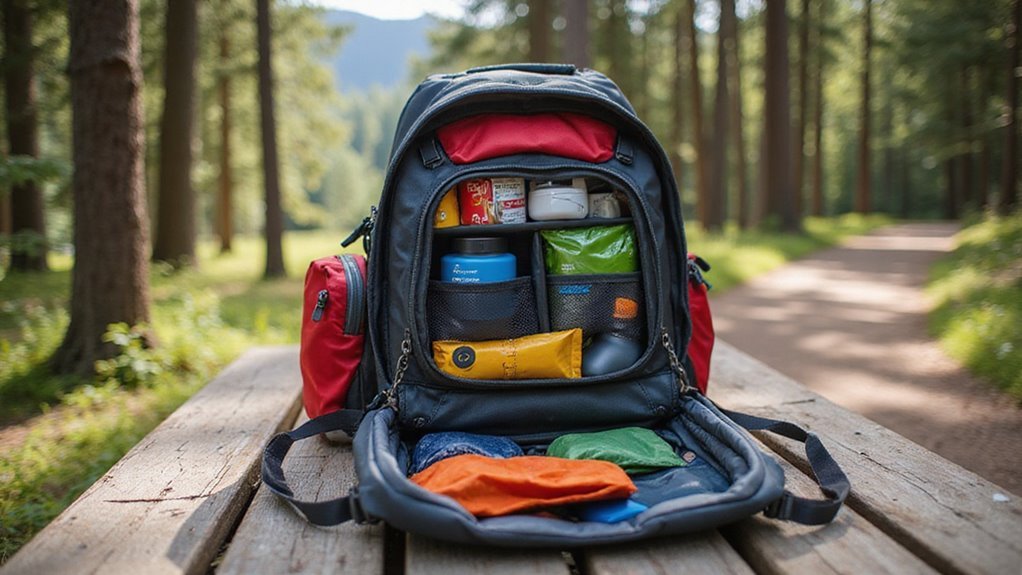Nothing kills a long hike faster than a clunky, disorganized backpack dragging you down. We’ve spent decades perfecting the art of streamlined packing, and we’re letting you in on our hard-won secrets. From pack sizing to compression techniques, these five critical strategies will transform your hiking experience from an awkward struggle into a fluid dance with the trail. Let’s cut through the noise and get your pack trail-ready.
Choosing the Right Pack Size and Volume

Three key pack sizes will make or break your hiking experience.
Let’s nail this: Day packs (5-30L) for quick trips, Travel packs (30-50L) for weekend warriors, and Trekking packs (50L+) for serious long-distance missions.
We’re talking choosing the right pack size for maximum comfort on your backpacking trip.
Here’s the deal: weight distribution matters.
New to backpacking? Start with 25-30 lbs.
Seasoned pro? You can handle heavy gear up to 40 lbs.
Don’t mess up your backpacking experience by going oversized on short hikes – travel light when possible.
Match your pack volume to trip length, and you’ll crush those long hikes. Remember, ideal volume range is crucial for overnight or short multi-day trips.
Proper Weight Distribution Techniques
Now that you’ve got the right size pack, let’s master how to load it. Strategic weight distribution isn’t just about comfort – it’s essential for stability and injury prevention. Pack heavy items close to your back and hips for a well-balanced center of gravity. Here’s your fail-proof loading guide:
| Zone | What Goes There | Why | Weight Class |
|---|---|---|---|
| Bottom | Sleeping gear | Shock absorption | Light |
| Core | Food, cooking | Load stability | Heavy |
| Top | Quick-access | Easy reach | Medium |
| Sides | Even items | Balance | Equal |
Remember: Adjust your pack harness, hip belt, and shoulder straps regularly. Your spine will thank you later. Additionally, keeping heavy items close to the spine enhances comfort and stability during your hike.
Essential Gear Organization Zones

Mastering your backpack’s organization zones will make or break your hiking experience. Let’s tackle essential gear organization zones with military precision.
Start with the bottom zone – that’s where your sleeping bag and pad live. They’re soft, creating a shock-absorbing foundation.
Your core zone‘s the heavyweight champion, holding dense items like food and cooking gear. Keep that center of gravity low.
Top zone? That’s your rapid-deployment area. Rain gear, first-aid kit, snacks – things you’ll grab without excavating.
Using packing cubes throughout each zone isn’t just neat-freak territory – it’s lightweight backpacking intelligence. Your compression straps will thank you. Additionally, ensure that your weight limits are adhered to, as carrying too much can lead to discomfort on long hikes.
Smart Compression Systems
While novice hikers often ignore compression systems, these sophisticated load-management tools are your secret weapon for maintaining control and stability.
Let’s master your backpacking pack’s compression features for maximum comfort during long hikes.
- Smart compression systems reduce bulk by up to 30%, making trail navigation easier.
- Adjustable straps and compression sacks lock gear in place, preventing unwanted shifting.
- Strategic weight distribution keeps heavy items close to your body’s center.
- External straps enable quick adjustments as you consume supplies.
- Multi-zone compression ensures gear stabilization across varied terrain.
- Remember that tent weight significantly impacts overall pack weight, so incorporating lightweight gear can further enhance your hiking experience.
Master these systems, and you’ll transform your backpacking experience from burdensome to brilliant.
Strategic External Attachment Points

External attachment points transform your pack into a tactical command center – if you know how to use them properly. Let’s master the art of external organization with daisy chains and gear loops for sleeping pads and trekking poles. We’ll use compression straps to lock down bulky items and prevent shifting. Here’s the catch: don’t overload those external points. Keep your backpack’s profile streamlined by attaching only lightweight gear. Smart hikers use carabiners for quick-access items like water bottles. Remember, a clean exterior means fewer snags on branches, making your hiking experience smoother and more efficient. Additionally, utilizing MOLLE systems can enhance your backpack’s organization and adaptability for various hiking needs.
Frequently Asked Questions
How to Pack a Backpack for Long Distance Hiking?
Let’s pack heavy gear in our pack’s core for weight distribution, place essentials like food and water within reach, and organize clothing layers and emergency supplies using efficient packing techniques.
What Are the Big 4 in Backpacking?
Let’s cut to the chase: The Big 4 backpacking essentials we can’t live without are our backpack, tent shelter, sleeping bag, and sleeping pad – they’re the core of our lightweight gear setup.
Is 35 Lbs Too Heavy for Backpacking?
We’d consider 35 lbs slightly heavy for backpacking weight, but it’s manageable with proper pack adjustment and fitness preparation. For ideal pack comfort, we recommend reducing to 25-30 lbs for better hiking comfort.
What Size Backpack for Long Day Hikes?
We recommend a 30-50L backpack for long day hikes, ensuring proper weight distribution and room for essentials. Look for adjustable features, load lifters, and hydration options to maximize comfort during extended walks.